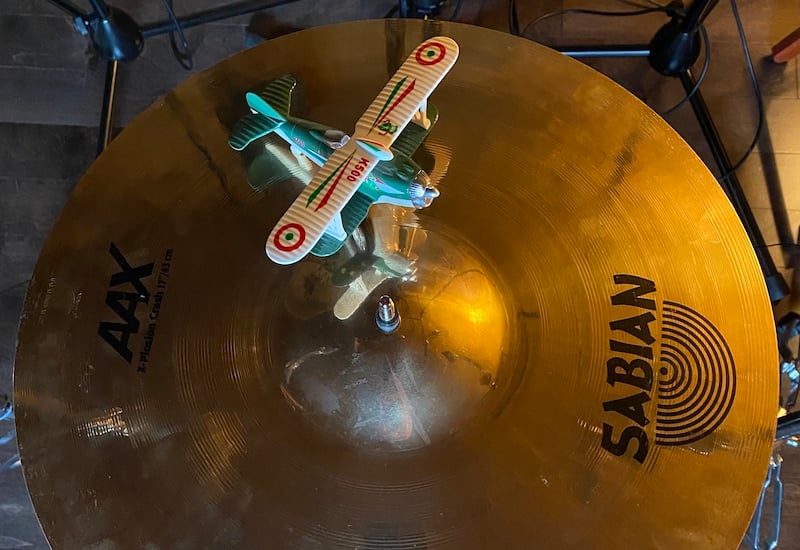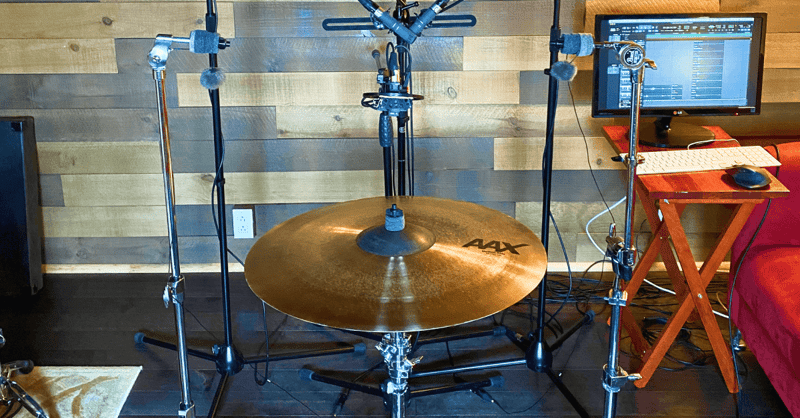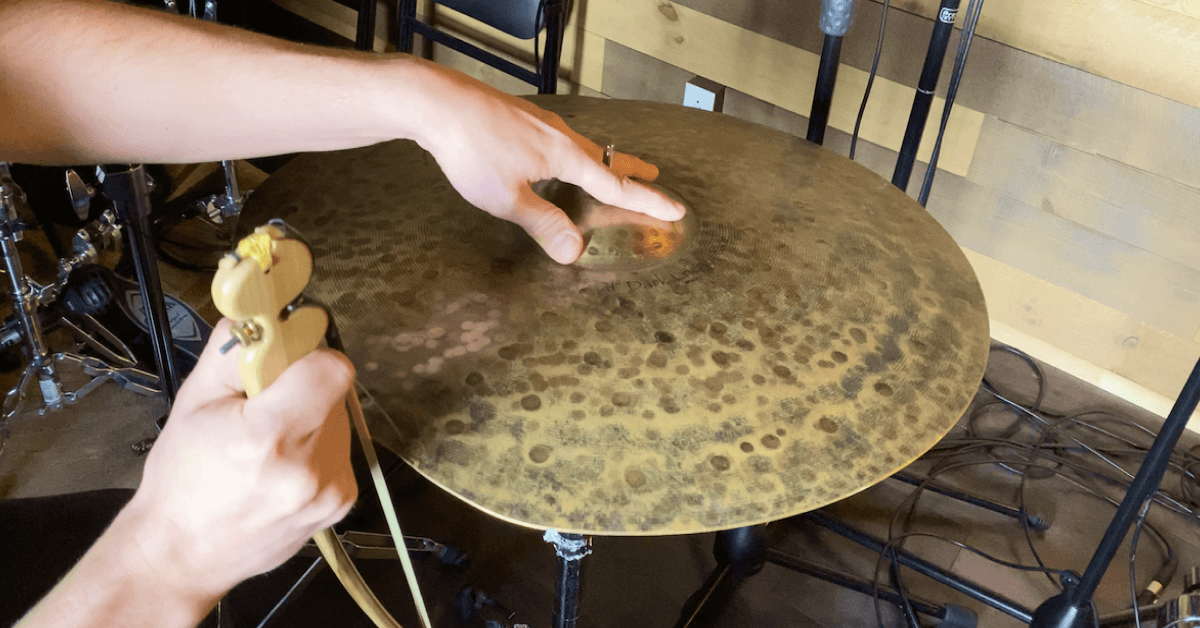Take an inside look at the recording process behind our detailed library of bowed and scraped cymbals.
We are proud to bring you Bowed & Scraped Cymbals – the latest library in the Sonomar Collection. Crafted by sound artist Martin Pinsonnault (CODA, Dallas Buyers Club) and the Sonomar team, this library uses items such as cymbal bows, a toy airplane, and an electromagnetic C-Bow to produce expressive drones, abrasive screeches, and shimmering resonance.
Read our interview below to learn about Martin's process in capturing this meticulous library.
Pro Sound Effects: What was your inspiration for creating this library?
Martin Pinsonnault: The inspiration for this library came from Dan D’Errico, Library Manager at Pro Sound Effects. He shared with me that Sonomar Collection: Cymbals could benefit from adding bowed cymbals sounds. We took the challenge with this update.
We wanted to create multiple metal resonance layers to be used at all sorts of pitch, some very low to explore the deep resonance of metal, grinding, rattling, beating, emerging, and hiss. Feedback resonance can give also deep roars, ideal for sharp and crispy motor scenes or for atmospheric tonalities to explore tension, suspense, and spookiness.
Think of it as a dose of energy, either more organic with bowed and scraped, or more tonal and piercing with our Electronic C-Bow in a lot of variations.
Using a bow on a cymbal
Can you describe your experience recording this library?
Since we already covered typical general and particular sounds of cymbals with the previous release, we decided to focus on other types of sounds using different types of bows and other objects to excite the cymbals.
During a brainstorm session about the library with long time partner of Sonomar, Thomas Brodeur, a professional drummer who collects cymbals and bows for his progressive rock project Karcius, talked to me about the C-Bow, which I did not know before.
The C-Bow (cymbal electronic bow) is a feedback device that works exactly like a guitar E-Bow but it is capable of exciting heavier resonant surfaces like metal percussion (cymbals, gongs, pipes and all other resonating objects). It is made of a contact mic used as pick up, a transducer that re-projects the sound onto the same surface where the contact mic takes it, and a simple analog amplifier with a low pass filter. The sound comes mostly from the object that the C-Bow makes resonate.
After research, nothing apparent was on sale. The only thing similar to what we wanted was made from Luigi Marino. We contacted him about buying one of his devices, but he said that he’s not making c-bows for sale. But, he proposed to share his electronic plan so that we can build one ourselves. Long time Sonomar electronics enthusiast and sound artist David Tremblay was technically qualified to build three units of our own C-Bow based on Luigi Marino’s information. One for each of us, specially made to enhance this sound effects library for your sound design!
This feedback device that excites hard surfaces is an interesting way to create new sound occurrences, compared to the sounds created by a hand and a bow, which have a human touch, attack, evolution, sustain, and grain. Thomas also had multiple bows to play the cymbals, as well as other objects to create some really eerie sounds.
See the C-Bow in action
Any fun recording session stories to share?
While recording and trying different objects to create some new sounds, Thomas’ son lent him a small toy plane that, when scraped on the cymbal surface, created an amazing hi-pitched with dissonant harmonics and complex scrape sounds. Thomas was then able to create some amazing textures and sounds thanks to that toy plane!
Scraping a cymbal with a toy plane
Why is this library useful for sound artists?
This library is very useful to enhance sound design as an additional layer of metal resonance of energy. It's also useful as a stand-alone effect that can sneak in and create discomfort, a build, a climax, or even be part of a transition. It can be pitched down and used for other things like machines, engine, cars, planes, boats, rattles, grindings, acceleration, deceleration, explosion, and intense metal vibrations.
It is usable in reverse, with or without high frequency content, depending on the pitch it is being played back at. Reverb or processing can be added on top to get closer to desired sound or to bring the acoustic to the desired environment.
This collection can be used for any car or motor scenes, and any rhythmic or objects resonating in real location. For me personally as a sound designer, this is where I see the value and richness of this library, and should be used as a layering track for harmonics and dissonance that gets added in the overall mix as a support to real scenes. Very high quality sounds give access to more artistic and creative manipulation. Some of the tracks I processed show roughly the potential use of this as a distinct and very organic tool in day-to-day sound design. These sounds can be transposed and adapted to fit with other sounds that have similar resonance. They can fill from very deep low to having strong mids and very precise highs, depending on the sound to enhance.
"Thomas’ son lent him a small toy plane that, when scraped on the cymbal surface, created an amazing hi-pitched with dissonant harmonics and complex scrape sounds."

What makes this different from other sound libraries?
It is not a typical cymbal library, it's not processed, and it's in raw stage, ready to be treated for any particular purpose. Sound designers can look at a combination of textures, adjusting the pitch and further processing and can add similar material searching between bowed, scraped, and C-Bowed with multiple cymbals to create unique sound textures.
Can you provide any notable technical details about the recording of this library?
Everything was recorded at 24 bit, 192 kHz but delivered to PSE after mastering at 96kHz. We used high quality microphones (Schoeps MK4-MK8, Sennheiser MKH 8040, DPA 4060 and Neumann U87) through an Apogee Ensemble thunderbolt interface. The whole library was recorded in a soundproofed room with a tiny bit of reflection from a wood wall.
"Very high quality sounds give access to more artistic and creative manipulation. Some of the tracks I processed show roughly the potential use of this as a distinct and very organic tool in day-to-day sound design."












